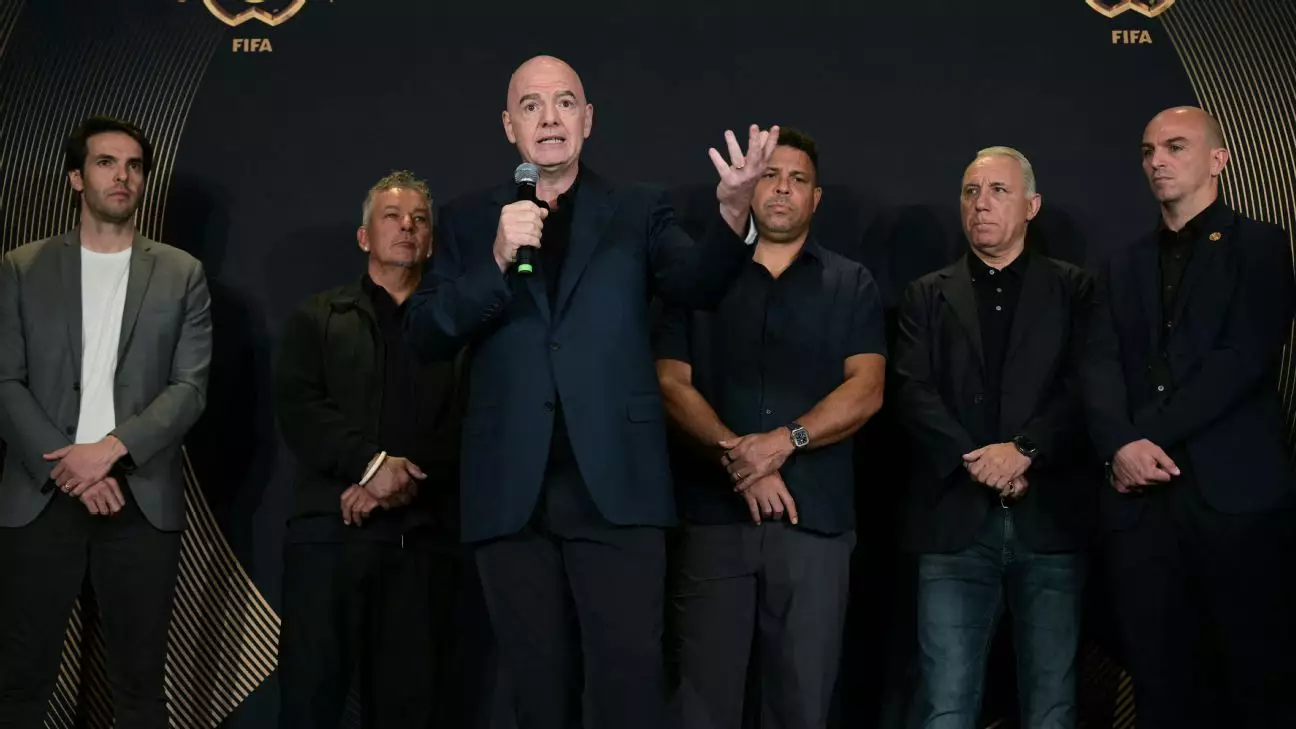The ongoing debates surrounding the scheduling and infrastructure of international football tournaments underscore a critical truth: the sport must evolve to meet environmental realities. The recent controversies over extreme heat during the Club World Cup in the United States reveal a glaring oversight in tournament planning. Players, some of the best in the world, have voiced genuine concerns about health risks, with fatigue, dizziness, and even potential heat-related illnesses becoming commonplace. This exposes an urgent need for governing bodies like FIFA to prioritize climate-smart solutions, integrating innovative stadium designs and scheduling strategies that combat rising temperatures. The decision to utilize stadiums with roofs and climate control systems signals a step in the right direction, but it is merely the beginning of a comprehensive overhaul necessary to safeguard players and ensure the integrity of the game.
Climate adaptation must become a central pillar of future tournament planning. Incorporating covered venues equipped with air conditioning, green technologies that reduce heat absorption, and even scheduling matches during cooler parts of the day can significantly mitigate harm. The sport’s global appeal demands resilience; otherwise, extreme weather events could diminish the spectacle and endanger participant safety. Moreover, FIFA’s acknowledgment that heat is a pressing issue creates an opportunity for wider innovation—turning challenges into catalysts for sustainable development within the sport.
Reimagining Tournament Formats for the Modern Age
The criticism around the proposed 32-team summer Club World Cup reveals an underlying tension between tradition and innovation. While some argue that expanding the tournament risks diluting the quality of competition, others see it as a chance to democratize and globalize the sport further. FIFA’s president Gianni Infantino defends the current structure, emphasizing the feedback from participating teams and the desire to build the “golden era of football.” However, the real question lies in whether this format truly serves the sport’s evolution.
The future of such tournaments should be rooted in flexibility and responsiveness. For instance, including contingency plans that allow for rescheduling in extreme conditions would demonstrate a proactive approach. The inclusion of European teams that requested invitations highlights a broader pattern: traditional powerhouses want to participate more often, but the key to progress is not just expanding tournaments but doing so smartly. Balancing the commercial interests of larger clubs with the need for equitable exposure can foster a more inclusive and resilient global football ecosystem.
Furthermore, the tournament format should embrace technological advancements—virtual reality highlights, enhanced broadcasting, and real-time health monitoring—to maintain high spectator engagement while prioritizing player welfare. This strategic integration fosters a progressive image for the sport, demonstrating that football is adaptable and forward-thinking rather than rigidly attached to outdated traditions.
Leadership and the Power of Symbolic Engagement
Infantino’s comments about President Trump’s attendance at the final illustrate the importance of political symbolism in global sports. These high-profile moments serve as moments of unity, transcending politics and reaffirming the sport’s role as a unifier. Yet, as with climate adaptation and tournament restructuring, relying on symbolic gestures must be complemented by tangible actions.
The sport’s leadership should leverage such occasions to champion broader societal issues—climate action, inclusivity, and international cooperation—using football as a vehicle for positive change. By aligning tournament venues and schedules with environmental sustainability goals, leaders send a clear message: that the modern game recognizes its responsibility towards the planet and its global community.
The intersection of sports, politics, and social activism presents opportunities and pitfalls alike. While Nelson Mandela used the 1995 Rugby World Cup to unite the nation, modern sports leaders have the chance to accelerate sustainability agendas and promote social cohesion on a global scale. This requires bold, innovative leadership that prioritizes long-term sustainability over short-term spectacle.
The evolving landscape of international football demands a visionary approach—one that integrates climate adaptation, reformative tournament formats, and symbolic leadership. The criticisms leveled at FIFA serve as necessary catalysts for change, exposing vulnerabilities that, if addressed effectively, can propel the sport into a new era of resilience and inclusivity.
By embracing cutting-edge stadium technology, flexible scheduling, and strategic global cooperation, football can not only survive climate challenges but thrive beyond them. The sport’s power lies in its universal appeal, and with bold action rooted in innovation and responsibility, it can truly become a beacon of hope and progress for a changing world.

Leave a Reply